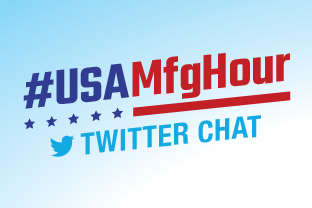Recently, our manufacturing branding agency was a guest on The Industrial Marketing Show to discuss messaging for manufacturers. In the podcast episode, we shared the most common ways that manufacturers fall short with their messaging and what exactly they can do to improve it and stand out in such a saturated industry.
When You’re Close to the Content, You Can Miss What’s Wrong With It
During initial conversations with manufacturers, many of them don’t see a problem with their messaging. They’ve been so close to it for so long that they can’t see how generic and outdated it actually is. But after seeing real examples of compelling content and how theirs matches up against it, that’s when they have the ‘aha’ moment. Current CEOs often rely on the work of the company’s original founders. Meaning, they rely on existing relationships and word of mouth to continue getting business. While this is great for nurturing those existing relationships, it will only get you so far in the long run. Improving outdated and generic messaging is one of the most effective ways to build up those new relationships and see a real difference in the bottom line.
What Are the Most Common Mistakes And How to Correct Them?
Though we’ve worked with all different types of manufacturers through the years, it’s amazing to see how many of them make the same mistakes with their messaging. Here are some of the most common mistakes that we encounter and what you can do to be the exception:
• Your messaging is about you rather than your customers and what they care about. This is the most critical and common mistake that manufacturers make. They spend so much time talking about how great they are and virtually no time talking about what their customers actually care about. It is absolutely crucial for manufacturers to understand their clients’ pain points and make them the talking point of their messaging. How exactly do you solve your customers’ specific problems? Or do you even have a clear understanding of what those problems are? If you don’t, there are plenty of ways to get the answers. You can work with your sales team and make sure they’re asking customers the right questions to truly understand their problems and then use this information to strategize your messaging. You can interview your customers for case studies and understand the frustrations they had before encountering your company. You can also work with an industrial marketing agency that’s experienced with conducting customer interviews to make sure you’re getting the most out of these conversations. Regardless of how you obtain the information, it’s critical to understand what your customers truly care about and revolve your messaging around this.
• Your content leads with product specs. Many manufacturers think that their products will sell themselves. While this might have worked years ago when the competition was scarce, this is not the case today. Products have become much more commoditized and many companies are essentially selling the same products. In order to stand out, you must lead your messaging with true differentiators that you can prove and back up. These should be things that showcase your value without coming across as generic. Which brings us to the next point:
• You rely on overused terms to communicate your value. Words like “quality” and “customer-focused” have become so overused that they mean virtually nothing to customers. This isn’t to say that you shouldn’t use these words at all. But if you do, you need to show exactly how you are a quality company and add real substance to your messaging. Otherwise, there’s nothing separating you from the millions of other manufacturers saying the exact same thing.
• Your content is telling rather than showing. This is how you can actually prove that you’re high-quality, reliable, etc. One of the best ways to show rather than tell is by inserting case studies and testimonials into your content. By letting happy customers do the talking for you, you’re showing your value without directly promoting yourself. This is far more meaningful and valid for customers to read than self-promotional content that anyone can say.
• You rely on “Made In USA” as your standout attribute. We aren’t including this point to undermine the value of American-made products. This is in fact a very valuable and important thing to share. That being said, it shouldn’t be the core foundation of your messaging because at the end of the day, it’s something that many companies can promote. Think of it as an added value to your messaging rather than the essence of it. One way you can strategically promote this is by inserting an American flag somewhere on your homepage. And you don’t need to go into a lot of detail. People will see this type of imagery and know exactly what it means. If you do choose to mention American-made in your messaging, show customers how this benefits them (i.e., you’re more accessible, you provide faster shipping speeds, etc.). American-made can be a great way to further show the benefits of working with you, but it shouldn’t be the bread and butter of your messaging.
• Your website content isn’t serving a purpose. If your website is essentially acting as one giant business card, then it isn’t doing what it’s intended to do. When you write content that your customers actually care about (i.e., content that addresses their pain points and positions your company as the solution), your website will do a lot of the work for you. If your messaging is on point, then by the time leads call you, they’ll already be convinced to a large degree and will just want to just have a better understanding of who they’ll be potentially working with.
• Your messaging is too broad and isn’t targeting a niche. The more personalized your messaging feels, the more effective it will be. We always encourage clients to niche down as much as possible because it makes the content far less homogenized. This is actually something we’ve done ourselves and can attest to the value of narrowing down your audience. Before we became a manufacturing branding agency, we were a generalist agency and worked with clients from all industries. What we eventually discovered is that by niching down and specializing in a particular market, we went from competing against millions of other agencies to just a handful. By honing in on a particular niche, manufacturers can craft messaging that is far more strategic and compelling.
• You aren’t looking beyond your competition. When it’s time to revamp your content, don’t limit yourself to just your competition and your industry. While it is important to understand what your competition is doing, you’d be surprised how much you can learn by thinking beyond the obvious and drawing inspiration from other industries. To learn more about this, you can listen to the true story we shared in the recent podcast episode.
• You’re using the same messaging as your competition. Customers won’t appreciate you looking and sounding exactly like other companies. Yes, keep an eye on your competition as a reference point. But use your messaging to show how you’re different from your competitors, not the same.
• You don’t have a clearly defined company mission, personality, etc. When we ask clients to complete creative briefs and tell us what their mission, vision and values are, many of them don’t have these things clearly defined. When updating your messaging, it’s crucial to take a close look at who you are now. How is your company different today than it was 25 years ago? What do you stand for and what are you trying to achieve? Decision makers need to be on the same page and determine things such as the company’s personality, core values, etc. This needs to then be shared across the company to ensure the messaging is consistent across every platform.
• Your branding is too consistent. This might seem ironic given the points we made above. But when your branding is too consistent, it can actually work against you. For example, a sales brochure shouldn’t look exactly the same as your website or business card. Whether it’s small adjustments to the design or a new headline, there needs to be some sort of differentiation across your marketing. Otherwise, you can bore customers and lose valuable opportunities to draw interest.
• You have too many chefs in the kitchen. While it’s important to make people feel included, you also want to limit the amount of input with your messaging. In our experience, we’ve found that the more people that are involved, the more likely the messaging is to be safe and ineffective. Keep employees feeling involved and updated to encourage buy-in, but limit the amount of people determining the overall direction to prevent your messaging from becoming too safe and dry.
• Your sales and marketing departments aren’t working together. A messaging disconnect is often a reflection of workplace disconnect. It’s important to ensure your sales and marketing teams are working together rather than competing against each other. Sales can often have a major influence on marketing, and vice versa. It’s up to the CEO or management to ensure both departments are working toward the same goals and that the messaging is consistently aligned across the board.
Step Into Your Customers’ Shoes and You Will Go Far
We had a phenomenal conversation with the folks at The Industrial Marketing Show and discussed even more points in the podcast episode. But when all is said and done, the key takeaway is to cater your messaging to your customers’ wants and needs. Present your content in digestible pieces that are easy for readers to interpret and skim through. And make sure your messaging is aligned with what your customers truly care about because that is what will make them engage with your content and ultimately, convert.



